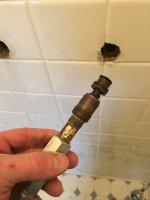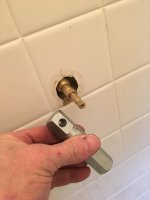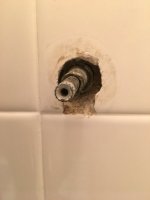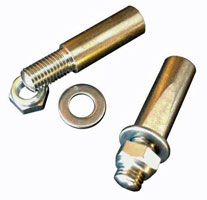Phil P.
New Member
So I'm working on a shower that won't fully turn off (drips from shower head). It's original valve from 1970 home. I turned off water and carefully disassembled, but to be honest not sure what I have. I was able to unthread/remove valve from hot side, but it didn't seem to come all the way out. I've watched a few DIY youtubes on valve repair (washer/seat).
I don't see where I can use the large valve/socket wrench to unscrew it. My hunch is it is not accessible because tiles cover access. It that's case, no problem I can carefully trim tile back to access it, I just don't want to start cutting away unless that's the case.
1) Should I start cutting back tile?
2) Also, what do you think is chance there is a stop back there if I cut the tile back far enough?
3) is it readily apparent to you pros what brand valve this is?
Here's a pic of what I can see, plus the items that I removed (and re-installed). Any advice appreciated.
Thanks Phil
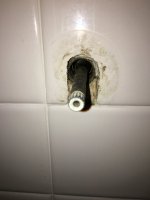
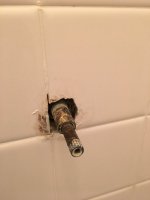
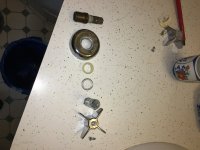
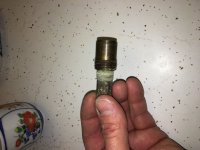
I don't see where I can use the large valve/socket wrench to unscrew it. My hunch is it is not accessible because tiles cover access. It that's case, no problem I can carefully trim tile back to access it, I just don't want to start cutting away unless that's the case.
1) Should I start cutting back tile?
2) Also, what do you think is chance there is a stop back there if I cut the tile back far enough?
3) is it readily apparent to you pros what brand valve this is?
Here's a pic of what I can see, plus the items that I removed (and re-installed). Any advice appreciated.
Thanks Phil





